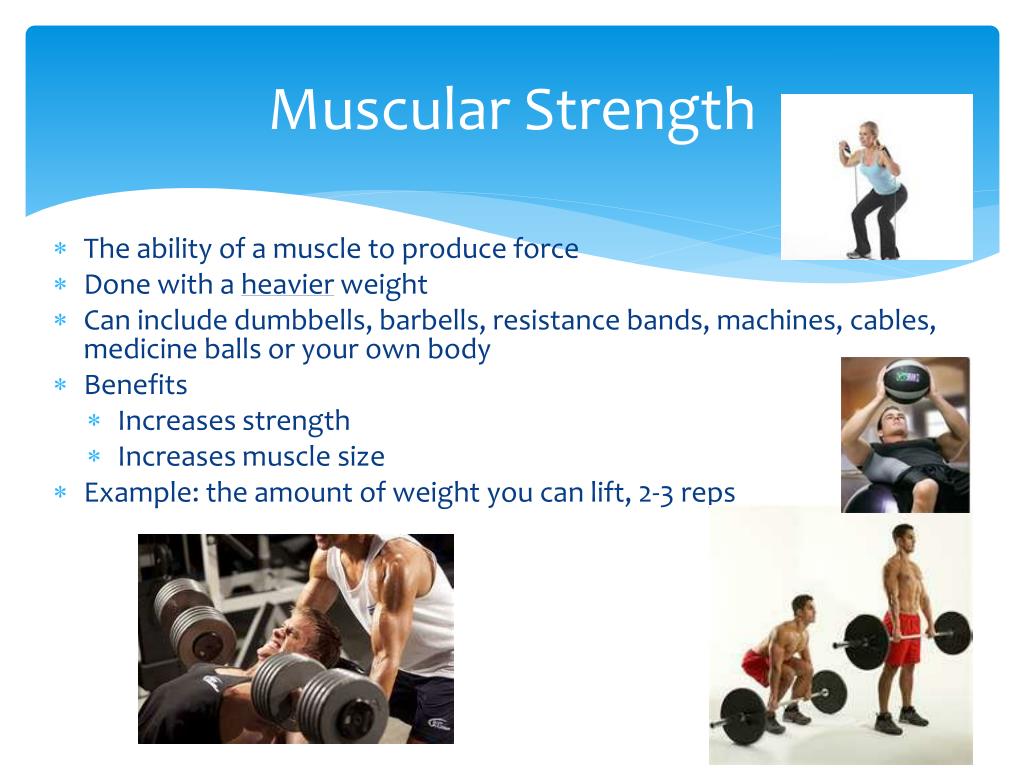

Velocity-based training: from theory to application. Weakley J, Mann B, Banyard H, McLaren S, Scott T, Garcia-Ramos A. ACE Integrated Fitness Training (IFT) model for functional movement and resistance training: Phases 3 and 4.
#Define muscular endurance in terms of exercise kinesiology how to
How to choose the right frequency and volume for workouts. International Sports Sciences Association. Breaking down the importance of strength-endurance training. Loading recommendations for muscle strength, hypertrophy, and local endurance: a re-examination of the repetition continuum. Schoenfeld BJ, Grgic J, Van Every DW, Plotkin DL. In fact, any activity that involves repeated movements patterns involves muscular endurance. This is a key fitness component and crucial for any endurance sport, and many team sports. Systematic review of the association between physical fitness and musculoskeletal injury risk: part 2–muscular endurance and muscular strength. We can define muscular endurance as the ability of a muscle, or a group of muscles, to repeatedly exert a force (contract) for an extended period. doi:10.1111/obr.13007ĭe la Motte S, Gribbin T, Lisman P, Murphy K, Deuster P. Muscular endurance is defined as the capacity of a specific muscle to consistently and repeatedly apply force over a certain time period. Hypertrophy versus muscular endurance training as therapeutic interventions in adults with type 2 diabetes mellitus: a systematic review and meta-analysis. doi:10.3389/fphys.2017.00690Īcosta-Manzano P, Rodriguez-Ayllon M, Acosta F, Niederseer D, Niebauer J. If your goal is to grow muscle, do more sets with a moderate amount of repetitions (for instance, four sets of 10 to 12 reps each).

Upper-body muscular endurance training improves performance following 50 min of double poling in well-trained cross-country skiers. If you are a beginner looking to build muscle, stability, and endurance, use a lighter weight and do fewer sets with high repetitions: two or three sets of 12 to 20 reps. This means that the muscles will have transferred even more energy than the amount calculated above.Borve J, Jevne S, Rud B, Losnegard T. Also, heat energy will be generated in the muscle tissues themselves. In the weightlifter example, the energy has been transformed to gravitational potential energy. The energy for muscle contraction comes from glucose transported by the blood and deposited in muscle tissues. Where does the energy come from and where does it go? If the weightlifter lifts the 100 kg explosively and takes only 0.5 seconds to make the lift, use this formula to calculate the power their muscles produce: Use this formula to calculate the work done (energy transferred) by the weightlifter: 100 kg has a weight force of 1000 newtons. The power of muscles refers to how quickly the muscles can do this work and transfer the energy.Įxample: A weightlifter lifts 100 kg up a distance of 1.5 m. When muscles contract or stretch in moving a load they do work, and energy is transferred from one form to another.

The primary joint actions that occur during the squat include: Eccentric (lowering) Phase. Use this formula to work out what weight Alisha should be able to lift if her muscle tissue is similar to Emily’s: The barbell squat is a compound, multi-joint exercise designed to target many muscles of the lower body and lumbo-pelvic-hip complex (pelvis, low-back, and abdominals). Use this formula to work out how many newtons per square centimetre her muscles can pull with:Įmily’s friend Alisha has larger muscles that have a cross-sectional area of 8 cm 2. Muscle strength is directly dependant upon the size of the cross-sectional area of muscle, so if after a period of training, you increase your muscle size by 50%, you will also increase the force the muscle can develop by 50%.įor every 1 square centimetre of cross sectional area, muscle fibres can exert a maximum force of approximately 30–40 newtons (the weight of a 3–4 kg mass).Įxample: Emily can lift 21 kg (210 newtons force) using muscles that have a cross-sectional area of 6 cm 2. When we talk about the strength or muscles, we are describing the maximum force a muscle can exert. Mechanical strength, which refers to a muscle’s pulling force and the way those forces can be changed using bones and joints as levers.Neurological strength, which looks at how weak or how strong the signal is that tells the muscle to contract.Physiological strength, which depends on factors such as muscle size, the cross-sectional area of the muscle and responses to training.Muscle strength is also a result of the combination of three factors: There are three major factors that affect how well your muscles perform – strength, power and endurance.


 0 kommentar(er)
0 kommentar(er)
